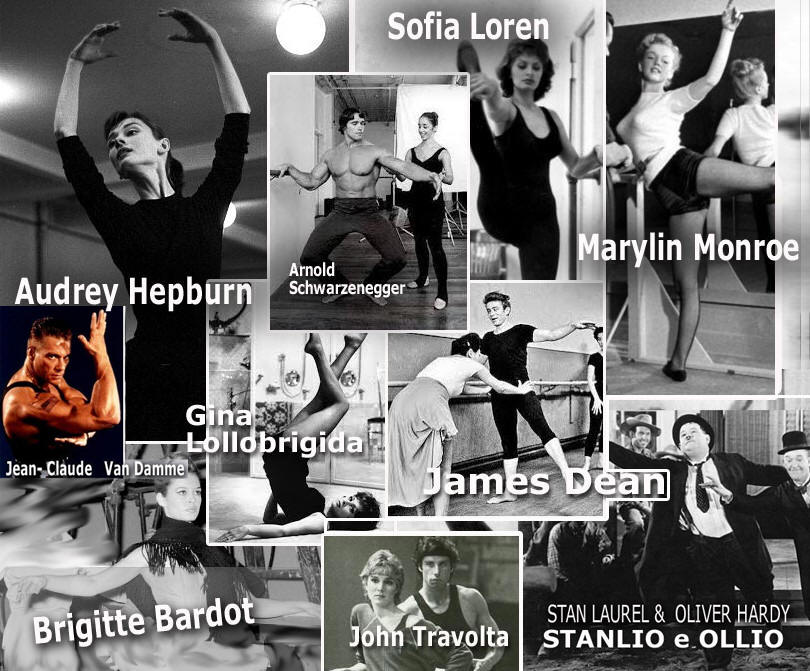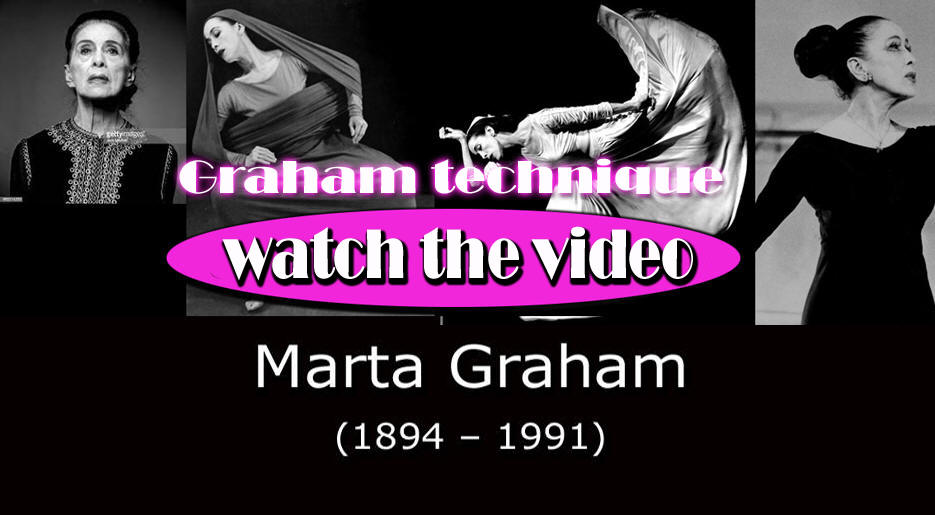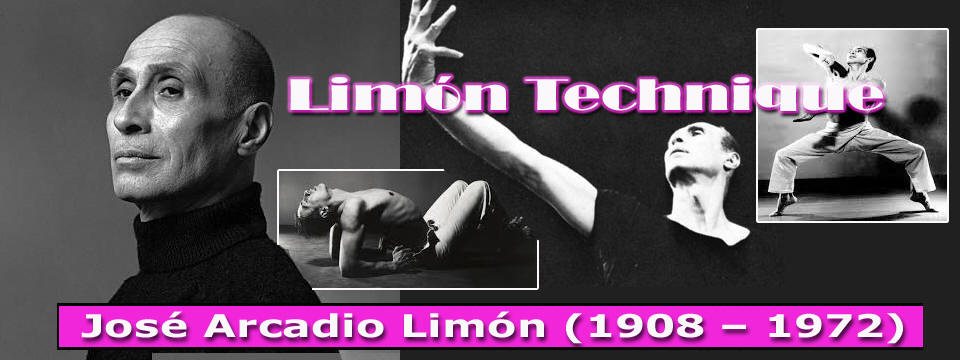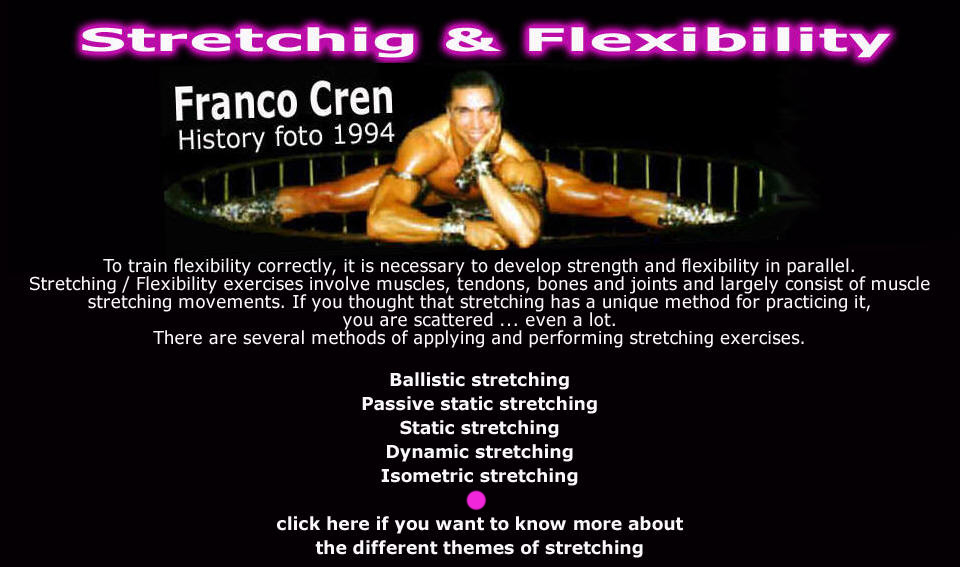|

 

|
FAMES PEOPLE,
who have perfected their ART and BODY WELNESS
with the exercises of academic dance exercises |


The expression "Graham technique"
is a style and pedagogy of the modern dance movement and was registered as a trademark before the death of the creator of the method from which it takes its name;
Martha Graham (1894-1991



This technique was created and studied from the start for injured dancers, allowing them to continue practicing without weighing on the affected limb. But the use of the "method" has also developed to work in detail on the various parts of the body in an isolated way, without the problem of balance and gravity, and with the calm and relaxation favored by the support of the ground. Over the years, the method has been the subject of various reworkings also for modern / contemporary dance or for other types of dance disciplines.
The Technique
is created by Boris Kniaseff, born Boris A. Knjazev (Russian: Борис А. Князев; St. Petersburg, 1 July 1900 - Paris, 7 October 1975), was a naturalized French Russian dancer and pedagogue. He gained fame in particular for the method of teaching ballet he developed, called the "barre à terre" or "barre au sol" (bar on the ground), a method that is still applied in dance schools all over the world. The technical principles of ballet are applied to it, with the rules and the succession of a normal "barre", but performing the exercises in a supine, prone or sitting position.
The technique allows to focus better the principles of alignment, en dehors, symmetry and opposition, and favors the development of proprioception, which provides them with internal rather than external points of reference such as simply copying the movement of the teacher or looking in the mirror. They can also focus on breathing and stretching muscle work.
There may actually be some correlation with the Pilates method because the concept of the center of the body is basically
common.
Is a postural alignment and correction technique created to develop and perfect YOUR OWN performances. In order for the body to remain healthy, we need to add a training method that reminds our body of the exact posture and realigns the muscles in their correct natural balance. Lesson indicated to improve posture and tone the muscles of the whole body. The work takes place mainly on the ground with exercises taken from the classical technique, strongly linked to the technical preparation of the dancers. The functional, technical and aesthetic improvements occur even in conditions of partial inadequacy to dance. The "Sbarra a Terra" method / technique has proved effective beyond the boundaries of the artistic and sports field, also involving rehabilitation therapists and physiatrists. It is able to improve technical skills, increase flexibility and strengthen correct muscles, prevent and rehabilitate from injuries. Significant improvements can only be seen after a few lessons. Each lesson takes place for 2/3 on the ground prone, supine or on the side. Increasingly difficult progression exercises are performed in parallel and in en dehors guided by the teacher's voice. The absence of gravity facilitates the perception of alignment and elongation allowing the development of a correct musculature. The slowness of the movements helps to create a "muscle memory" and awareness in the transitions. Under the guidance of the teacher without mirrors for most of the lesson it is possible to concentrate only on your body: you learn to feel, to memorize what is right and physiological for us and in a second moment self-correction is automatic. |

|
Limón technique was invented by José Limón in the 1930s. Student of Doris Humphrey (mother of contemporary dance), José Limón created a technique that fought against the pristine of classical ballet.
This movement is all about feeling; as José Limón said “A gesture, be it a leap, turn, run, fall, or walk, is only as beautiful, as powerful, as eloquent as its inner source. . . Purify, magnify, and make noble that source. You stand naked and revealed. Who are you? What are you? Who, what do you want to be? What is your spiritual caliber?”
This movement focuses on the elements of fall and recovery, rebound, weight, suspension, succession, and isolation. It is truly freeing. It is about how dance feels within the body, rather than how it looks for performance. His technique is developed through a subdivision into isolations of localized impulses, addressed in all directions. The classic technique is also used in the warm-up exercises, however the movement is always generated from the center of the body. The result is a very dynamic style. |


|
Dancer "CORE"
training (ABDOMINALS) The "CORE" (referred to by
dancers as the STRENGTH and EQUILIBRIUM CENTER) is a
point of extreme importance, both in dance and in
all sporting activities. All energies that are
generated by the body ORIGIN OR HAPPEN from our CORE.
It goes without saying that a stable and resilient
center offers enormous advantages in any sport. The
stronger the CORE, the better you balance your body,
the better you wah. Correct posture and an efficient
CORE will allow you to avoid back and lower limb
problems such as lumbago or sciatica. Exercises to
tighten the core stabilizer muscles, which also help
improve posture, must be performed correctly and
with the right muscle tension.
|
Video
|
Pilates is a method of exercise that consists of low-impact flexibility and muscular strength and endurance movements. Pilates emphasizes proper postural alignment, core strength and muscle balance. Pilates is named for its creator, Joseph Pilates, who developed the exercises in the 1920s.
|

|
Exercises with the "PILATESBALL" aimed at improving balance, strength, muscle flexibility, muscle tone and coordination. Training with pilatesball pushes the different muscle groups to work in synergy to perform fluid and natural movements. The ball has the ability to respond elastically to the weight exerted on it, which allows our muscles to operate in almost zero gravity, without straining the joints and reducing the risk of trauma. From a physical point of view, training with pilatesball allows you to improve various aspects. One of the main benefits certainly concerns the improvement of posture. Performing a low / medium intensity workout with specific exercises helps improve cardiovascular efficiency while simultaneously burning fat; as well as all aerobic activities, the body is in fact pushed to draw on the various fat reserves to obtain the energy necessary for the execution of the movement. The balance factor is very important. Being unstable, the ball helps the subject to sense the position of his body in the surrounding space, working on proprioception and thus obtaining better control of the muscles. In addition, perceiving the actions and their location in the environment improves muscle reactivity and contributes to the dynamic stability of the joints, which is also an essential factor for the development of balance. Finally, all the micro-movements that are performed using pilatesball play an active role in blood circulation thus improving the general health condition of the person: to which is added the motivational and psychological impact that has a very positive effect on the state people's health |


video

|